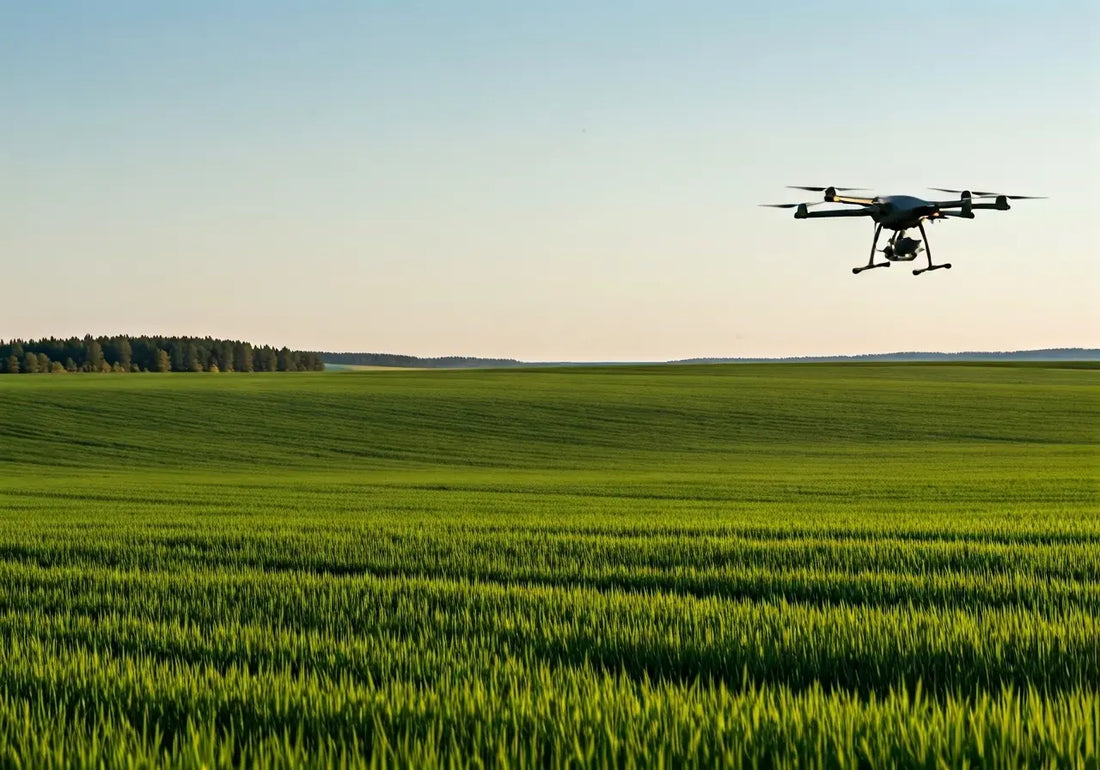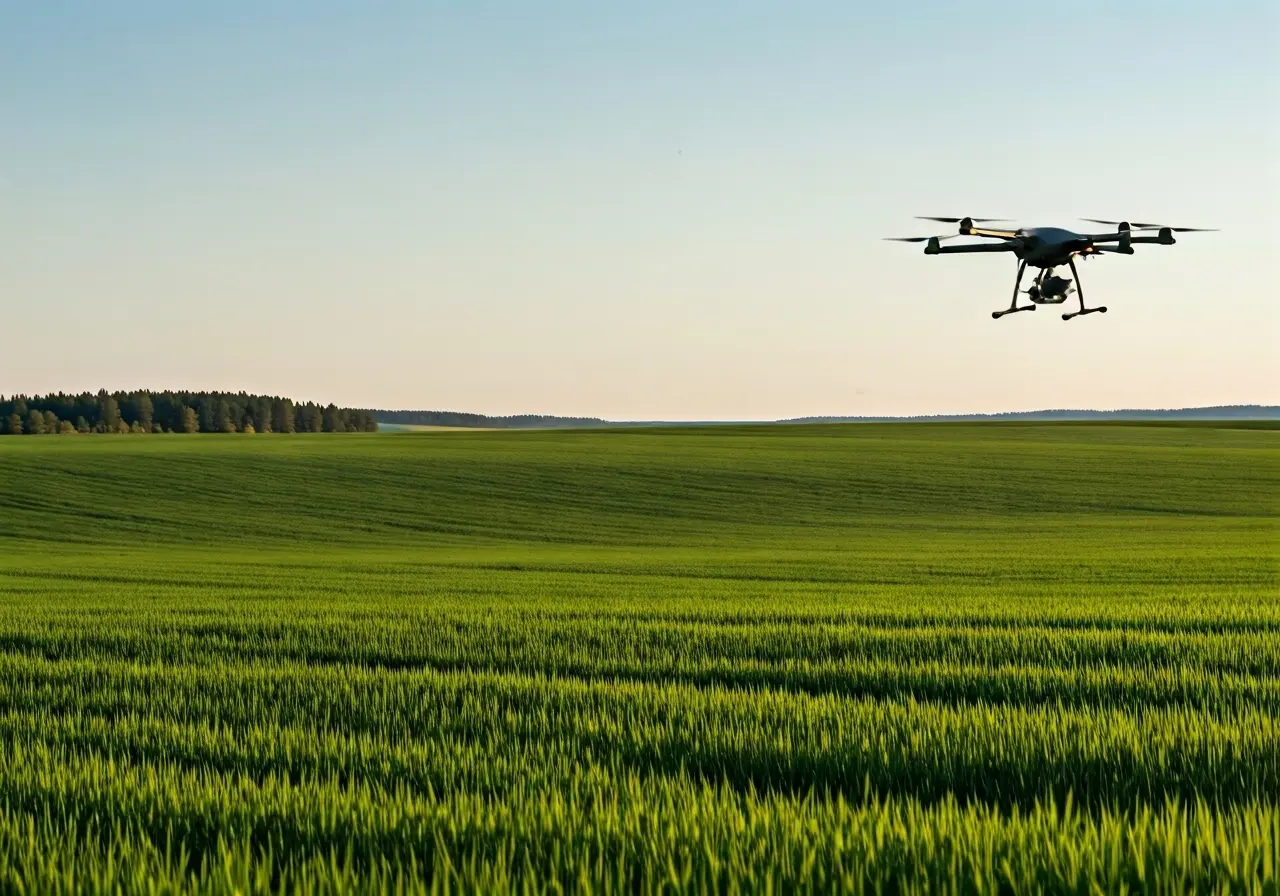
Enhancing Agricultural Efficiency with UAV Crop Spraying
Share
In recent years, technology has been revolutionizing various industries, and agriculture is no exception. One of the most exciting advancements in this sector is the use of Unmanned Aerial Vehicles (UAVs) for crop spraying. This innovative approach is helping farmers increase efficiency, reduce costs, and improve yields. In this article, we’ll explore how UAV crop spraying is changing the face of agriculture and the benefits it brings.
The Rise of UAVs in Agriculture
Unmanned Aerial Vehicles, or drones, have taken the agricultural industry by storm. Initially used for aerial photography and mapping, their potential was soon realized in crop management. Understanding how UAVs became a vital tool in agriculture helps highlight their importance. Early adopters of UAV technology harnessed their capabilities for monitoring crop health and assessing land conditions. These applications quickly set the stage for further advancements, such as the integration of multispectral imaging and precise data collection, paving the way for UAV crop spraying to emerge as a revolutionary practice.
The evolution of UAV technology in agriculture is intertwined with the industry’s need for efficiency and precision. Traditional methods of crop management and spraying often faced limitations, such as lack of accessibility and inefficiencies in chemical applications. In contrast, UAVs offer unparalleled maneuverability and accuracy. According to recent studies, the deployment of drones can reduce the time spent on crop surveillance and intervention by up to 40%[^1]. This transformative impact emphasizes the role of UAVs as a catalyst for change in farming methodologies.
Key Benefits of UAV Crop Spraying
UAV crop spraying offers numerous advantages over traditional methods. These include precision application, reduced chemical usage, and the ability to access hard-to-reach areas. Let’s dive deeper into how these benefits make UAVs a superior choice for farmers. Precision application enables drones to target specific sections of a field, tailoring chemical dosage to match the exact needs of the crops, significantly minimizing waste. This not only conserves resources but also promotes environmental sustainability by decreasing the chances of overuse and run-off of chemicals into nearby water sources.
Moreover, UAVs empower farmers to carry out operations in previously inaccessible or difficult terrains, eliminating the challenges posed by large traditional machinery. In regions with diverse topographies, UAVs can adeptly navigate slopes and confined areas, ensuring that every part of a crop receives the attention it deserves. Another compelling advantage is the reduction in manual labor. Farmers are not only saving on manpower but are also enhancing workplace safety by minimizing direct contact with chemicals.
Cost-effectiveness is another significant benefit driving the adoption of UAV crop spraying. The ability to perform multiple tasks such as monitoring, spraying, and analyzing data increases the value proposition of drones in the agricultural sector. Farmers leveraging these technologies report up to a 50% reduction in spraying costs[^2]. This is primarily due to more efficient use of chemicals and reduced manpower requirements, showcasing a promising return on investment for those adopting UAVs in crop management.
The Technology Behind UAV Crop Spraying
At the heart of UAV crop spraying lies sophisticated technology. Understanding the components and capabilities of these drones provides insight into their impressive performance. From GPS navigation to advanced sensors, explore what makes UAVs an essential tool for modern farming. High-resolution cameras and multispectral sensors are essential for providing detailed images that help in assessing crop health. These tools enable drones to identify areas needing attention, such as those infected by pests or suffering from nutrient deficiencies.
GPS technology ensures that drones follow precise flight paths, essential for uniformly covering fields during spraying operations. The integration of geolocation technologies allows for the automation of flight paths and spraying operations, enabling efficient, time-saving procedures. Furthermore, many UAVs are equipped with return-to-home capabilities, ensuring that drones autonomously return to their starting point upon completion of a task or when battery levels are low.
Challenges and Considerations
While UAV crop spraying offers many advantages, there are challenges to overcome. Regulatory issues, weather dependencies, and initial investment costs are just a few factors farmers must consider. By addressing these, we can ensure the successful integration of UAVs in agriculture. Navigating regulations governing drone usage is perhaps one of the most significant hurdles. Different regions have varying laws regarding aerial drone operations, which can impact when, where, and how UAVs may be deployed.
Climate conditions can also affect the efficiency of UAV operations, particularly during spraying. Wind speed and direction can influence chemical dispersal, necessitating rigorous planning and timing to maximize effectiveness. Additionally, the upfront investment in UAV technology, while offering long-term savings, may deter some farmers who lack the initial capital. Solutions such as partnering with service providers or joining cooperative groups to share resources can help mitigate these financial barriers.
The Future of UAVs in Agriculture
As technology continues to evolve, so too will the role of UAVs in agriculture. From improved capabilities to expanded functions, the future holds exciting possibilities for drone technology in farming. Learn about the trends and innovations that are set to shape the future landscape of agriculture. Among the most anticipated advancements are developments in artificial intelligence that could allow UAVs to make real-time decisions, further enhancing their precision and efficiency.
The integration of machine learning with UAVs promises to enable drones to analyze patterns within crops, predict yields, and even recommend interventions without human input. This level of autonomy could redefine agricultural practices, making farms more self-sustaining and responsive to environmental changes. The increasing scalability and affordability of UAV technology suggest an inevitable expansion into more sectors of agriculture, potentially including tasks beyond crop management, such as soil analysis, livestock monitoring, and disaster management.
Embracing the Future of Farming with UAVs
UAV crop spraying is proving to be a game-changer in the world of agriculture. By embracing this technology, farmers can enjoy increased efficiency, cost savings, and sustainable practices. As we look to the future, it’s clear that UAVs will continue to play a crucial role in modern farming, ensuring that agriculture is more productive and environmentally friendly than ever before. To learn more about how our technology can transform your farming practices, visit our homepage.

